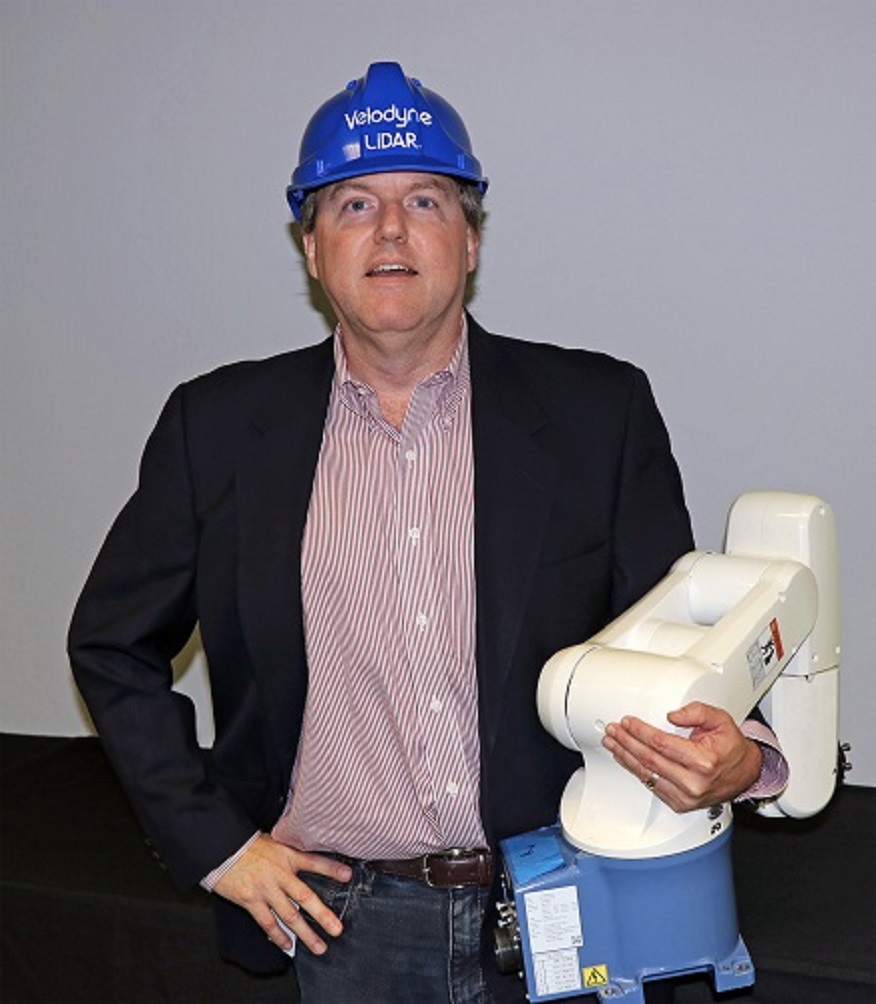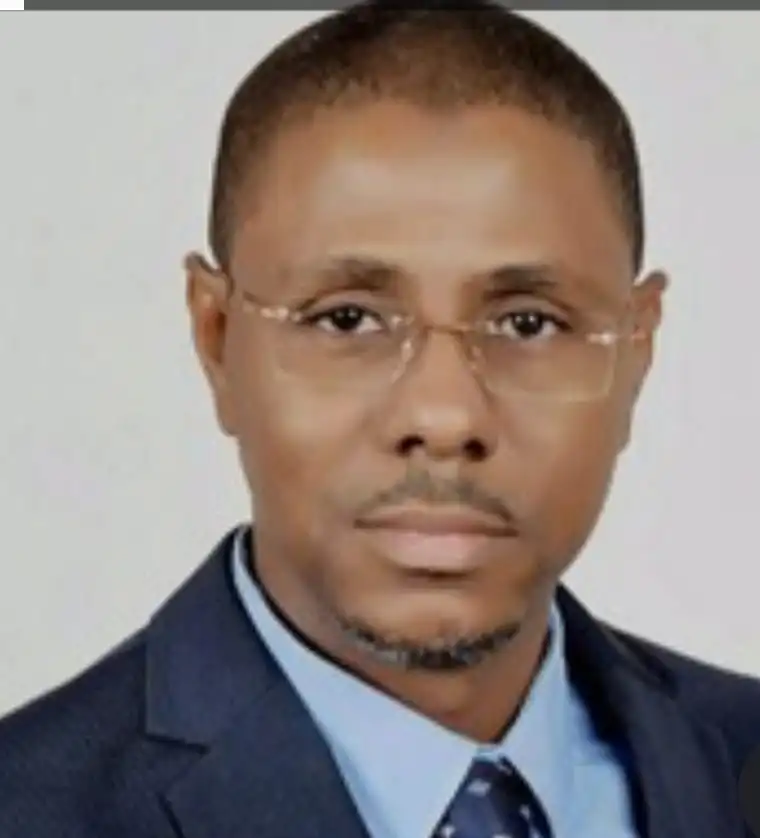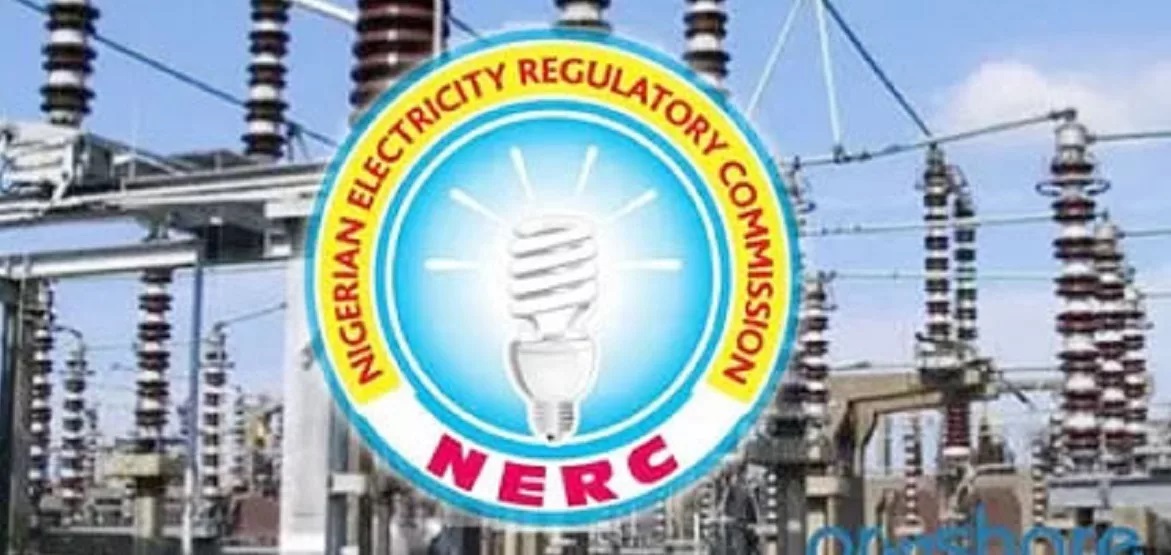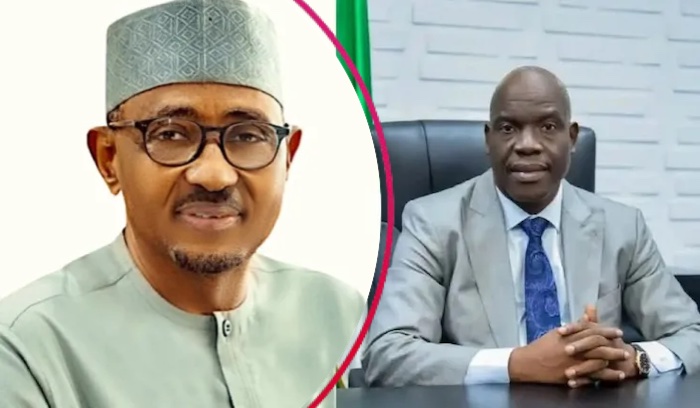Jobs/Appointments
Velodyne Lidar Promotes Rick Tewell to Chief Operating Officer

By Dipo Olowookere
Silicon Valley-based LiDAR technology company, Velodyne Lidar, has announced the promotion of Mr Rick Tewell to Chief Operating Officer.
Mr Tewell assumes leadership of the company’s vast manufacturing efforts at its Megafactory in San Jose, California.
He joined the company in September 2017 as Senior Vice President of Automated Manufacturing and was promoted to Chief Advanced Manufacturing Officer prior to the promotion to COO.
He brings a wealth of expertise to the day-to-day production of Velodyne’s industry-leading lidar sensor product line.
According to Marta Hall, Velodyne’s President and Chief Business Development Officer, Velodyne “recruited Rick Tewell to manage Robotics and Advanced Technology, and within a year it was clear he could lead Operations as COO.
“Velodyne Lidar is at the extreme edge of high tech, and Rick meets the challenge with da Vinci-like multiple talents. In the last three months Rick upgraded the entire Velodyne Megafactory with robotics and newly designed innovative processes for production. As COO he brings a futuristic vision and fresh energy to the operations of the company.”
“My main responsibility,” said Mr Tewell, “is to take a design that came from the mind of a genius, David Hall [Velodyne’s Founder and CEO], and make it into a product worthy of the Velodyne name. I work with David and Anand [Gopalan, Velodyne’s Chief Technology Officer] to translate these wonderful designs that have the ability to change the world into something that is manufacturable and then ramp production to meet the demand. To take an invention from Dave Hall and turn it into a manufacturable product is a huge responsibility and one that I take very seriously. It’s an incredible opportunity. I get out of bed excited to go to work, and I go to bed thinking about it.”
According to Mr Tewell, the job of Chief Operating Officer at Velodyne is unlike any other. Between designing and manufacturing the highest quality sensors on the market comes the equally challenging task of inventing and building the machines that then build the sensors.
“For our sensors to be able to see so far and produce incredibly accurate data for autonomous vehicles to use, we have to employ incredibly precise processes, which include utilizing robotics and automation. So we need to also invent the machines that will build our sensors.” Given the uniqueness of Velodyne’s products, Mr Tewell pointed out that he must address the complex processes of “taking something that’s never been invented or built before and building tens of thousands — hundreds of thousands — millions of them. It is a whole series of inventions to produce the sensor invention. So, it is not just the genius of the lidar itself; it’s the genius of saying, ‘This is what you are going to need to invent in order to manufacture the sensor.’”
Before coming to Velodyne, Mr Tewell established a successful career in the automotive semiconductor industry, including stops at Fujitsu and NVIDIA.
Rick remembers, “The idea that cars eventually would be robots emerged while Dave Hall was participating in the DARPA Grand Challenge. At NVIDIA we were creating the brains that would be used in self-driving cars.”
Mr Tewell’s interest and experience in developing key technologies for autonomous mobility grew over the years. Finally, Tewell decided to join Velodyne with the clear realization that he would be “aligning with a company that will be one of, if not the, principal company in the self-driving industry.”
Mr Tewell recognizes the essential role Velodyne’s products have in enabling safe mobility at scale. “We are working hard to meet the next wave of demand for sensors to put on autonomous vehicles. Scaling up will drive the cost down to where the price is attractive to all customers. But we will never compromise on quality. It is critical from an operations standpoint that our product will ultimately impact someone’s life. This realization needs to permeate every aspect of what we do. This is not a piece of technology that is going to stay in a box. When you put a sensor on a car the person in that car is trusting that technology to keep them safe.”
Jobs/Appointments
Jalo-Waziri Bows Out as CSCS CEO, Shehu Shantali Takes Over

By Adedapo Adesanya
The Central Securities Clearing System Plc (CSCS) has announced the appointment of Mr Shehu Yahaya Shantali as its new Chief Executive Officer (CEO), effective January 1, 2026, subject to regulatory approval.
Mr Shantali will succeed Mr Haruna Jalo-Waziri, who will step down after an eight-year tenure, where he contributed significantly to advancing Nigeria’s capital market infrastructure.
During his tenure, Mr Jalo-Waziri provided visionary and results-driven leadership that delivered sustained growth and far-reaching transformation across the organisation.
He led the successful execution of critical strategic initiatives, strengthened governance and operational effectiveness, and modernised the company’s systems and processes, positioning the organisation for long-term resilience and competitiveness.
His leadership significantly enhanced stakeholder confidence, deepened the organisation’s market relevance both domestically and internationally, and established a strong, future-ready foundation for continued success.
Commenting on the appointment, the Chairman of the CSCS board, Mr Temi Popoola, said: “On behalf of the Board, I would like to express our profound appreciation to Haruna Jalo-Waziri for his outstanding service to CSCS. Under his leadership, the company recorded notable milestones and built an impressive legacy of operational excellence, innovation, and stakeholder confidence. We thank him sincerely for his dedication and impact.
“We are equally delighted to welcome Shehu Shantali as the new Chief Executive Officer of CSCS. He brings a wealth of experience, deep industry knowledge, and a strong strategic vision. The Board is confident that he will build on the solid foundation laid by his predecessor and lead the Company into its next phase of growth.”
Mr Shehu Yahaya Shantali holds a Bachelor of Science degree in Accounting from Ahmadu Bello University, Zaria, and an Executive MBA from Kingston Business School. He has over two decades of experience in accounting, finance, and financial services across Nigeria and the United Kingdom, with expertise spanning investment and asset management, financial advisory, and International Financial Reporting Standards (IFRS).
His career cuts across capital markets, investment banking, real estate, and financial services, and is underpinned by a decade at the Securities and Exchange Commission (SEC) Nigeria, where he championed the migration of publicly listed and significant public interest entities from Nigerian GAAP to IFRS and led the Commission’s transition to the contributory pension scheme in 2012.
Mr Shantali has built deep experience in financial inclusion, digital financial infrastructure, and the development of scalable, market-wide platforms that expand access to regulated financial services. As Managing Director and Chief Executive Officer of Apricot Investments Limited, he led the development of the MicroWorld platform, enabling the distribution of structured financial products, including micro-health, micro-pension, micro-housing, micro-insurance, and micro-investment solutions.
Earlier in his career, his team developed Nigeria’s first contactless payment solution, and he played a pioneering role in POS-based agency banking and early mobile-money interoperability on the NIBSS NIP platform, supporting efficient payments, settlement, and system-wide connectivity.
Reflecting on his tenure, the outgoing CEO, Mr Jalo-Waziri, stated: “It has been an honour to serve as the Chief Executive Officer of CSCS. I am proud of what we have achieved together as a team and grateful for the support of the Board, management, regulators, and all our stakeholders. I am confident that CSCS is well-positioned for the future, and I wish my successor every success as he takes the company forward.
In his remarks, the incoming CEO, Mr Shantali, said: “I am deeply honoured by the confidence the Board has placed in me with this appointment. CSCS plays a critical role in Nigeria’s capital market ecosystem, and I look forward to working with the Board, management, staff, regulators, and market participants to strengthen the Company’s leadership position further, deliver value to stakeholders, and support the continued growth and stability of the capital market.”
In a statement, CSCS Plc commended Mr Jalo-Waziri for his contributions to enhancing the company’s operational capabilities and fostering market development during his tenure with the organisation.
The company reaffirmed its commitment to upholding the highest standards of corporate governance, operational excellence, and stakeholder engagement as it continues to support the Nigerian capital market.
Jobs/Appointments
Tinubu Approves Reconstitution of NERC Board

By Adedapo Adesanya
President Bola Tinubu has approved the reconstitution of the board of the Nigerian Electricity Regulatory Commission (NERC), following the Senate’s confirmation of its members on December 16.
This was disclosed in a statement released by the Special Adviser to the President on Information and Strategy, Mr Bayo Onanuga.
He noted that the board is chaired by Mr Musiliu Olalekan Oseni, who started his service as a Commissioner in January 2017. He was subsequently appointed Vice Chairman of the commission.
His appointment as Chairman took effect from December 1, 2025, and shall subsist until the completion of his ten-year tenure at the commission, in accordance with the provisions of the Electricity Act, 2023.
Mr Yusuf Ali is now the Vice Chairman. He was first appointed as a Commissioner in February 2022. His designation as Vice Chairman took effect on 1 December 2025 and shall remain in effect until the completion of his first term.
The others are; Mr Nathan Rogers Shatti — Commissioner. He is serving a second term as commissioner. He was first appointed in January 2017.
Mr Dafe Akpeneye — Commissioner. He is serving a second term, having been first appointed as a Commissioner in January 2017.
Mrs Aisha Mahmud Kanti Bello — Commissioner. She is serving her second term, having been first appointed as a Commissioner in December 2020.
Mr Chidi Ike, PhD— Commissioner. He is serving his first term, having been first appointed as a Commissioner in February 2022.
Mr Fouad Animashaun, PhD — Commissioner. He is serving his first term, effective December 2025. He is an energy economist with extensive experience in the Nigerian power sector and most recently served as Executive Commissioner and Chief Executive Officer of the Lagos State Electricity Regulatory Commission.
President Tinubu charged the board members of NERC to deepen and consolidate the ongoing transformation of Nigeria’s power sector, in strict alignment with the letter and spirit of the Electricity Act, 2023.
Jobs/Appointments
NMDPRA CEO Farouk Ahmed, NUPRC Boss Gbenga Komolafe Resign

By Adedapo Adesanya
The chief executive of the Nigerian Midstream and Downstream Petroleum Regulatory Authority (NMDPRA), Mr Farouk Ahmed, has resigned alongside his counterpart at the Nigerian Upstream Petroleum Regulatory Commission (NUPRC), Mr Gbenga Komolafe.
Based on the development, President Bola Tinubu has asked the Senate to confirm new chief executives for the two agencies.
The President’s request was contained in separate letters to the Senate on Wednesday, according to a statement signed by Mr Bayo Onanuga, the Special Adviser to the President on Information and Strategy, late on Wednesday.
Both officials were appointed in 2021 by former President Muhammadu Buhari to lead the two regulatory agencies created by the Petroleum Industry Act (PIA).
To fill these positions, President Tinubu has written to the Senate, requesting expedited confirmation of Mrs Oritsemeyiwa Amanorisewo Eyesan as CEO of NUPRC and Mr Saidu Aliyu Mohammed as CEO of NMDPRA.
Mr Ahmed’s resignation comes amid a high-profile conflict with businessman, Mr Aliko Dangote, who alleged that the NMDPRA chief and his family were living beyond their legitimate means, citing millions of Dollars allegedly spent on overseas schooling for his four children.
Mr Eyesan, a graduate of Economics from the University of Benin, spent nearly 33 years with the NNPC and its subsidiaries. She retired as Executive Vice President, Upstream (2023–2024), and previously served as Group General Manager, Corporate Planning and Strategy at NNPC from 2019 to 2023.
Mr Mohammed, born in 1957 in Gombe, graduated from Ahmadu Bello University in 1981 with a Bachelor’s in Chemical Engineering. He was announced today as an independent non-executive director at Seplat Energy.
His prior roles include Managing Director of Kaduna Refining and Petrochemical Company and Nigerian Gas Company, as well as Chair of the boards of West African Gas Pipeline Company, Nigeria LNG subsidiaries, and NNPC Retail.
He also served as Group Executive Director/Chief Operating Officer, Gas & Power Directorate, where he provided strategic leadership for major gas projects and policy frameworks, including the Gas Masterplan, Gas Network Code, and contributions to the Petroleum Industry Act (PIA).
He played a pivotal role in delivering key projects such as the Escravos–Lagos Pipeline Expansion, the Ajaokuta–Kaduna–Kano (AKK) Gas Pipeline, and Nigeria LNG Train.
-

 Feature/OPED6 years ago
Feature/OPED6 years agoDavos was Different this year
-
Travel/Tourism9 years ago
Lagos Seals Western Lodge Hotel In Ikorodu
-

 Showbiz3 years ago
Showbiz3 years agoEstranged Lover Releases Videos of Empress Njamah Bathing
-

 Banking8 years ago
Banking8 years agoSort Codes of GTBank Branches in Nigeria
-

 Economy3 years ago
Economy3 years agoSubsidy Removal: CNG at N130 Per Litre Cheaper Than Petrol—IPMAN
-

 Banking3 years ago
Banking3 years agoFirst Bank Announces Planned Downtime
-

 Banking3 years ago
Banking3 years agoSort Codes of UBA Branches in Nigeria
-

 Sports3 years ago
Sports3 years agoHighest Paid Nigerian Footballer – How Much Do Nigerian Footballers Earn













